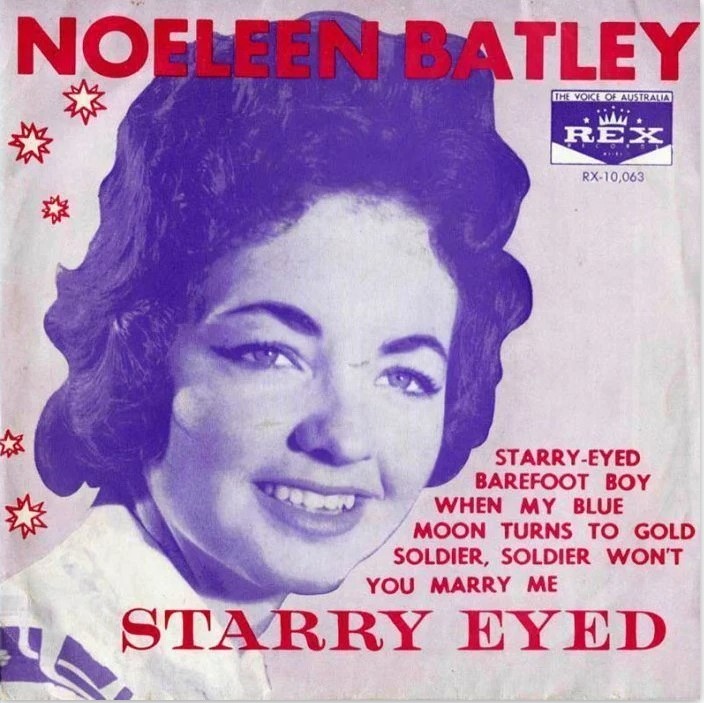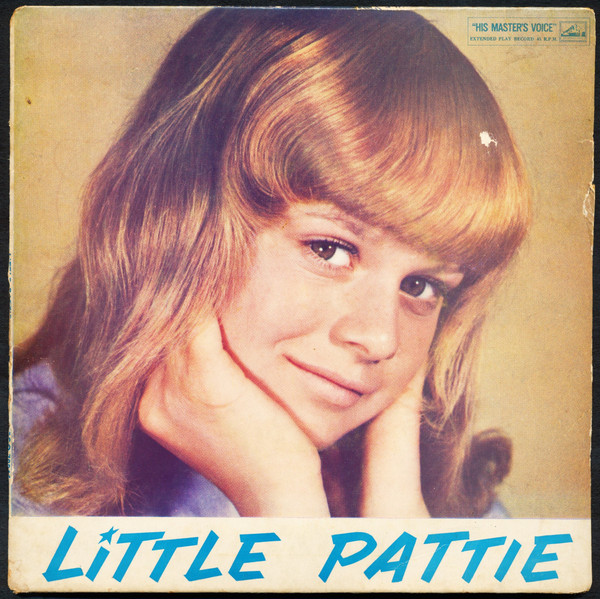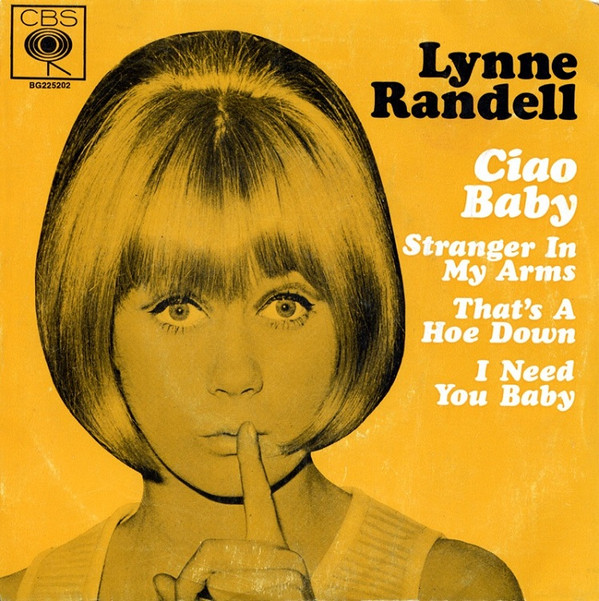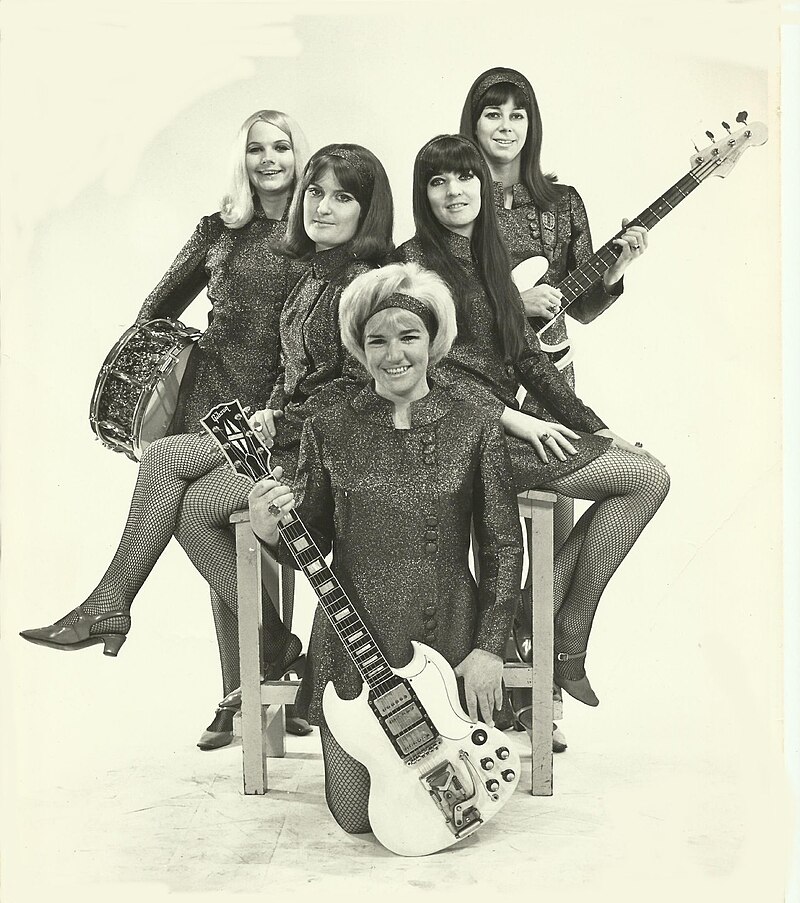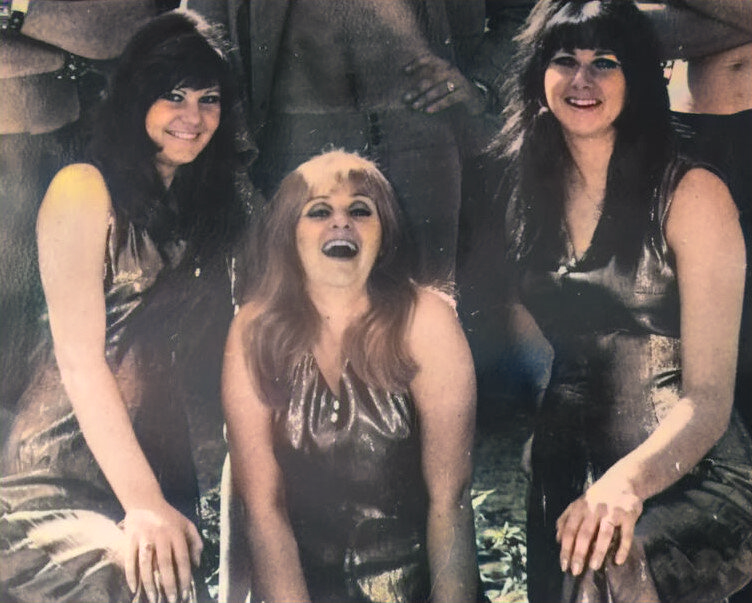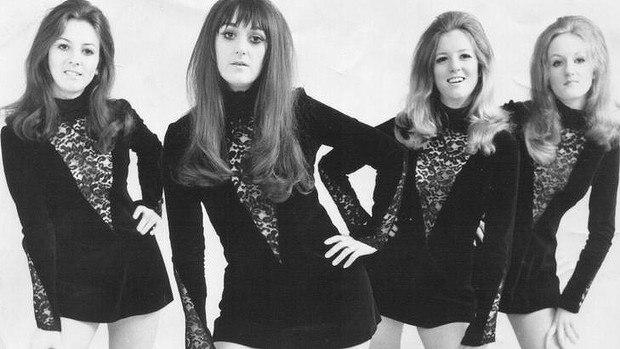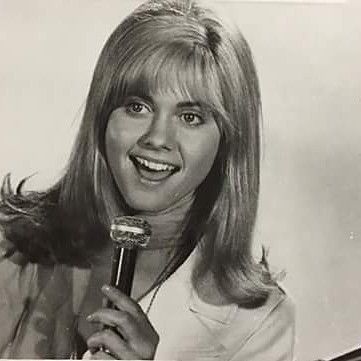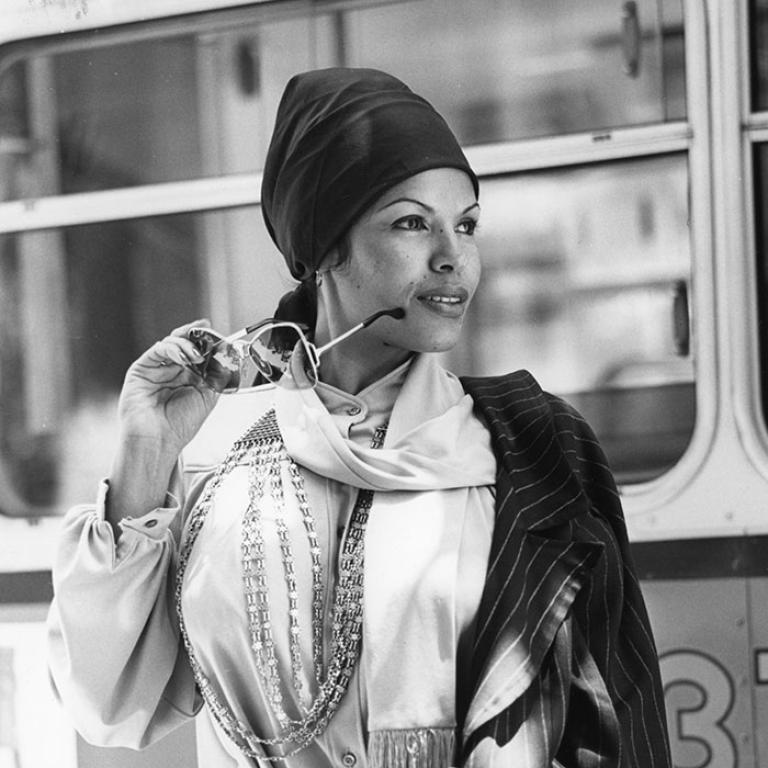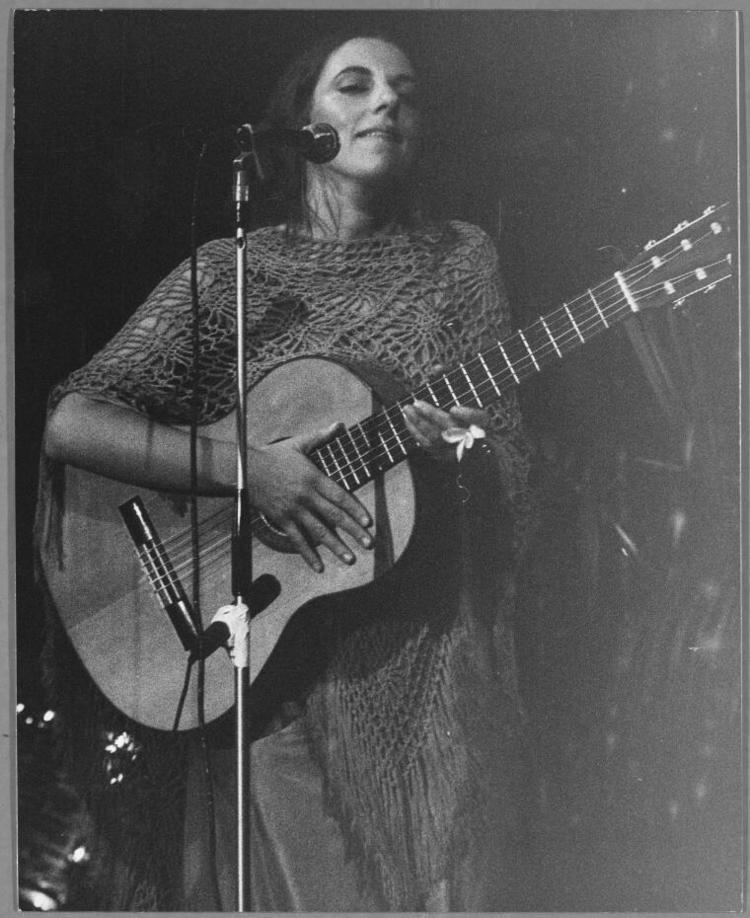The Swinging Sixties:
The 'Swinging Sixties' was a decade of youth-driven cultural revolution that not only saw a flourishing in art, music, fashion, and a number of significant social movements, but it also saw an innovation in politics, culture, and science. It cannot be understated that the 1960s not only completely revolutionized music forever, but it was by
far the most influential musical decade in modern history, with many Australian female singers and musicians being an important part of this swinging new scene.
Noeleen Batley (pictured), known as "Australia's Little Miss Sweetheart", was the first woman to have a Number one hit in Australia in July 1960. The song was called "Barefoot Boy" and was written by an 18-year-old Australian girl called Helene Grover. Patsy
Anne Noble was also a major star at this time and had a hit in November 1961 with the classic pop song, "Good Looking Boy"
Laurel Lea was an Australian popular singer of the
late 1950s and early 1960s. Lea appeared regularly on TV series, 'Bandstand', 'Six
O'Clock Rock' and 'Saturday Date', while Judy Stone
was also a regular on the
Bandstand family. In 1964
she had a huge hit with the song "4 Million 2 Thousand 3 Hundred and 21 Tears From Now".
One of the biggest female stars of the mid-sixties was Patricia Amphlett (pictured), who started her career as a teenager in the early 1960s, recording surf pop, with her backing group The Statesmen. Billed as 'Little Pattie', she released her debut single in November 1963, "He's My Blonde Headed, Stompie Wompie, Real Gone Surfer Boy". Pattie went on to have eight successful singles up to 1966 including "We're Going to Have a Party Tonight", "My Love", "Pushing a Good Thing Too Far" and "Dance Puppet Dance" In 1966, she toured Borneo and South Vietnam with Col Joye and the Joye Boys. She gave 40 concerts for Australian and American troops.
Dinah Lee, who was from New Zealand, also had a very successful career
after having a hit in 1964 with the song,
"Don't You Know Yockomo". She
followed this with the songs
"Feet Petite" backed with. "Do the Blue Beat". Her debut album "Introducing Dinah Lee" was a gigantic success. She was also known as the 'Queen of the Mods', with the mod subculture flourishing in Australia from roughly 1964 - 1968.
Toni McCann, described as a “bundle of dynamite”, was best known for her 1965 cult classic songs, “Saturday Date”, “No” & “My Baby“. Jane Palmer was a member of The Soundbenders who released 2 singles for Festival in 1968/69. Palmer was a pioneer for women in the music industry being a lead guitarist in a male dominated band. Virtually unheard of in the 60s.
Another favourite with the mods was singer Lynne Randell (pictured), an English/ Australian pop singer. For three years in the mid-1960s, she was Australia's most popular female performer and had hits with "Heart" and "Goin' Out of My Head" in 1966, and "Ciao Baby" in 1967.
All-Female Acts:
The Vamps (pictured) broke the mold by becoming Australia’s first all-female rock band in April 1965, formed by founding mainstay Margaret Britt on guitar. Between 1965 and 1969 they toured extensively in Australia, New Zealand, South East Asia and the Pacific Islands, including six months performing at military bases in South Vietnam during 1967–1968.
Brisbane band The Blue Beats formed in the mid-1960s and were one of the first all-female rock bands to come out of Australia.
Female vocal trio The Chiffons (pictured) also toured Vietnam around 1969 with The Gallery, entertaining the Australian troops stationed there.
Marcie Jones started as a teenager with The Thunderbirds at Canterbury Ballroom and Preston Town Hall in Melbourne, in the early 1960s. She then went on to perform with Normie Rowe's band The Playboys and appeared on the 'Go-Show'. She issued five singles from 1965 to 1967 on the Sunshine label with some minor chart success. In 1967, on the suggestion of Normie Rowe, she teamed up with the Cook sisters (who were already performing as 'The Cookies') in Brisbane. Marcie & The Cookies (pictured) were in the mold of such U.S acts as The Supremes and The Crystals.
The Sapphires were four Indigenous sisters from Cummeragunga (NSW), Gail, Cynthia, Kay and Julie, who travelled to Vietnam in 1968 as singers for the soldiers during the war.
Conservative Values / Leaving OZ:
However, despite many women having successful careers as singers or musicians in the 1960s, the full-time family thing cut short the careers of many female singers, although the decision was often not theirs to make. For many women in the early 1960s it was an either/or scenario - you either had a family or you had a career. You didn’t have both. In addition, because Australia has never been great at valuing its own artistic history, and holding the opinion that anything good has to come from overseas, a number of female singers left Australia for the UK and the USA to find bigger and better opportunities.
The Seekers (with singer Judith Durham) left Australia for the UK in April 1964. They were the first Australian group to make the British charts with their song "I'll Never Find Another You". The song was written by Torn Springfield, and went to Number One in March '65.The Seekers were also the first Australian group to make the US charts, in early '65. Between November 1963 and January 1968 the Seekers had 11 hit singles in Australia. In March 1967 they played to 200,000 people at the Myer Music Bowl in Melbourne. At the same time they had their international hit "Georgy Girl".
Olivia Newton-John (pictured) had immigrated with her family to Melbourne from London. In her mid-teens she used to sing folk songs in coffee lounges in Melbourne. Like many women before her, she came into the limelight by winning a talent quest run by Johnny O'Keefe on 'Sing Sing Sing'. Her prize was a trip to London, and she left after she finished school in 1965. Her folk voice, combined with her country phrasing, allowed her to connect with American popular music - where folk and country come together.
Olivia worked with fellow Australian Pat Carroll as a duo for a few years and then she went solo and recorded in 1971 "If Not For You", a song by Bob Dylan. In Australia this song went to Number One in April 1971, and in September 1971 she had another hit with the "Banks of the Ohio". Country songs were written for her by Australian John Rostill - "Let Me Be There" and "Please, Mr Please".
Olivia won the Country Vocalist Grammy from the US Academy of Country and Western Music in 1975 and continued to win dozens of awards throughout the seventies. While living in Los Angeles, she had album hits in Australia; in 1972 with "If Not For You", in 1975 with "First Impressions", in 1978 with "Grease" and in 1979 with ,"Xanadu". She continued to chart success in the early 1980's with "Physical" and "Greatest Hits Volume 3".
In 1966 Helen Reddy won
the Bandstand International Contest sponsored by Phillips
Mercury Records. Her prize was a trip to New York and a recording
contract. When she turned up, the record company said that the prize
was an audition for a record deal and that she had failed the audition (more about Helen Reddy in the section on the 1970s). More on Helen Reddy in the 1970s...
Jazz and Folk Music:
Following in the footsteps of her aunt Georgia Lee, Wilma Reading’s jazz ambition (pictured) took her around the world. Throughout her 40-year career Wilma performed with some of the world’s leading jazz musicians, including the legendary Duke Ellington band. She appeared on American television in the famous Johnny Carson Show and was also the musical guest on over 30 BBC television shows, including a season on Britain’s highest-rated program at the time, 'The Morecambe & Wise Show'. In 1961 Wilma Reading released three 7” single records on Australia’s Rex label in the early years of her career. The last single consisted of 'I only came to say goodbye' (A-side) and 'That’s how I go for you' (B-side). Both songs were written or co-written by the musical director of Rex, Franz Conde
Meanwhile, there was a growing underground movement of female
singer/ songwriters playing acoustic and folk blues influenced by the likes of Bob Dylan, Joan Baez and Peter, Paul and Mary. Jeannie Lewis (pictured), Margret Roadknight, Marion Henderson, Marni Sheehan and Wendy Grose all started playing in coffee lounges - the
music venues for this movement. These female singer/songwriters provided a musical form with intelligent lyrics and critical social
observations of the times.
Other Australian female Singers/Musicians/Acts of this era include: April Byron, Bev Harrell, Candy Devine, Carole King, Carolyn Young, Christine Dalton, Cecelia Brackenridge, Glen Tomasetti, Jan Carter, Janice Slater, Jenny Johnston, Joy Lemmon, Judy Banks, Judy Stone, Jennifer Ryall, Kerrie Biddell, Lana Cantrell, Linda Keene, Lee Sanders, Lee Sellers, Marian Henderson, Maggie Joddrell, Michelle Kennedy, Margaret Hooper, Margaret Flanagan, Norma Stoneman, Pat Carroll, Penny Parsons, Pam Oakley, Pam Bradley, Robyn Esham, Samantha Sang, Sue Jennings, Sonja Tallis, Shirley Simmons, Shirley Read, Sherry Wheeler, Shayna Karlin, Susie Coles, Sue Wylie, Tamara Osypenko, Vonny Jay, Wee Liz. Yvonne Barrett.
Denise
Dysdale and Jacki Weaver both had obscure one-off releases in the 1960s, but were dropped by
their labels before finding fame years later.
Interesting Facts:
In 1965, Merle Thornton and Rosalie Bogner had adapted
the tactics of the late nineteenth century suffragists
and chained themselves to the bar rail of the Regatta Hotel in
Toowong, Brisbane as a protest to the exclusion of serving women in
pubs.
In 1966 the ‘Marriage bar' on employment of married women as permanent employees in the Commonwealth Public Service was abolished. This meant that women employed by the government were no longer required to resign on marriage.
In 1967 all Aboriginal women (and men) were finally able to
vote.
In 1969 The Commonwealth Conciliation and Arbitration
Commission ruled that "equal pay for equal work" was to be phased in
by 1972.
Photo Credits:
